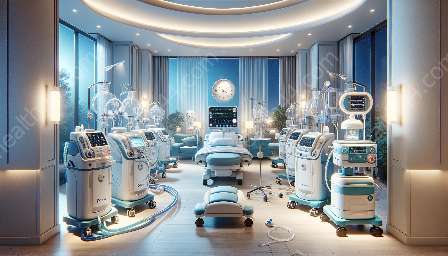Respiratory masks and interfaces play a crucial role in respiratory care devices and medical devices & equipment, offering a wide range of benefits and applications. In this comprehensive guide, we will delve into the features, benefits, and applications of respiratory masks and interfaces, showcasing their importance in the healthcare industry.
Understanding Respiratory Masks and Interfaces
Respiratory masks and interfaces are essential components used in respiratory care to provide assisted ventilation or oxygen therapy to patients with respiratory conditions. They are designed to ensure proper delivery of air or oxygen to the patient's lungs while maintaining comfort and minimizing the risk of infection.
These devices come in various forms, including nasal masks, full-face masks, nasal pillows, and interfaces designed for non-invasive ventilation (NIV) and continuous positive airway pressure (CPAP) therapy. They are constructed using hypoallergenic materials to ensure patient safety and comfort.
Features and Benefits of Respiratory Masks and Interfaces
The modern respiratory masks and interfaces are equipped with advanced features to enhance patient comfort and compliance. Many devices offer adjustable headgear, cushioning, and exhalation ports to minimize discomfort and pressure sores, making them suitable for long-term use.
Some masks and interfaces are designed with dual-wall cushioning to create a secure seal, preventing air leaks and ensuring effective therapy. Additionally, they may include quick-release clips for easy assembly and disassembly, promoting efficient cleaning and maintenance.
The benefits of respiratory masks and interfaces extend beyond patient comfort. They are crucial in reducing the risk of ventilator-associated pneumonia and enhancing patient adherence to therapy, leading to improved clinical outcomes and better quality of life for individuals with respiratory disorders.
Applications of Respiratory Masks and Interfaces
Respiratory masks and interfaces are utilized across various clinical settings, including hospitals, emergency departments, intensive care units, and home care. They are an integral part of treating conditions such as obstructive sleep apnea, chronic obstructive pulmonary disease (COPD), and acute respiratory distress syndrome (ARDS).
Moreover, these devices are widely used in respiratory rehabilitation programs and during post-operative care to support patients in maintaining adequate oxygen levels and improving lung function. Their versatility and adaptability make them essential components in addressing a broad spectrum of respiratory needs.
Respiratory Masks and Interfaces in the Context of Medical Devices & Equipment
Within the realm of medical devices & equipment, respiratory masks and interfaces hold significant importance due to their impact on patient care and treatment outcomes. As part of the broader category of respiratory care devices, they contribute to the comprehensive management of respiratory conditions through precise and reliable delivery of therapeutic gases.
These devices are designed to integrate seamlessly with other respiratory care equipment, such as ventilators, oxygen concentrators, and nebulizers, facilitating comprehensive respiratory therapy in diverse healthcare settings. Their compatibility with various medical devices enhances their utility and ensures streamlined patient care.
Conclusion
Respiratory masks and interfaces are indispensable components of respiratory care devices and medical devices & equipment, offering essential support in managing respiratory conditions and improving patients' respiratory health. Their advanced features, versatile applications, and compatibility with other medical devices make them essential assets in the healthcare industry, underscoring their critical role in ensuring effective respiratory therapy and patient well-being.


